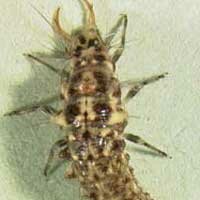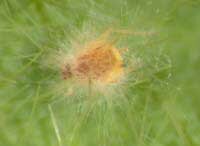
-
Soybean Diseases
- Asian Rust
- Anthracnose
- Bacterial Blight
- Bacterial Pustule
- Bean Pod Mottle Virus
- Brown Stem Rot
- Cercospora Leaf Blight
- Charcoal Rot
- Downy Mildew
- Frogeye Leaf Spot
- Green Stem Syndrome
- Iron Deficiency Chlorosis
- Phytophthora Root & Stem Rot
- Powdery Mildew
- Rhizoctonia
- Seedling Diseases
- Septoria (Brown Spot)
- SCN (Soybean Cyst Nematode)
- Soybean Mosaic Virus
- Stem Canker
- Sudden Death Syndrome
- Viruses
- White Mold
- Soybean Pests
- Diagnostic Help
- Field Trials
- Soybean Library
Your Soybean Checkoff.
Delivering Results.
Illinois
Indiana
Iowa
Kansas
Michigan
Minnesota
Missouri
Nebraska
North Dakota
Ohio
South Dakota
Wisconsin
Conservation of Natural Enemies of Insect Pests
 |
| Many beneficial insects need a source of pollen or nectar |
Conservation biological control is protecting the natural enemies that are already present.
Provide food, water and shelter
Providing food, water, and shelter for natural enemies will encourage them to stay in the crop area to feed and reproduce.
Beneficial insects often need an alternate food supply in addition to the pest prey. Many natural enemies, including the adult lacewing and minute pirate bug must have a source of nectar, pollen or honeydew to feed on in the general vicinity of the pest. This will stimulate egg laying in the crop.
Maintain a diverse landscape
A more diverse landscape tends to harbor many more natural enemies than a large-area monoculture because it offers more food, water, and shelter to beneficials.
 |
| Larvae of the green lacewing are common predators of insect pests in field crops. Photo credit: Peter Sonnentag, courtesy Eileen Cullen, University of Wisconsin |
Consider how you might supply these resources near your fields. Small patches of unmowed grass and flowering plants can provide a food source as well as sheltered, humid spots where beneficial insects can hide during the day without dehydration. A managed boundary around fields is also a good way to control weeds and provide overwintering sites for beneficials.
Practice IPM
Integrate the use of host-plant resistance, seed treatments, and insecticides with the presence of natural enemies and the contribution of biological control.
Evaluate the potential for interference among control strategies and work towards ways that promote synergism.
Use insecticides carefully
Most insecticides kill beneficial insects as well as the target pest.
Reduce the overall use of broad spectrum insecticides when possible and treat only when necessary based on economic injury thresholds of the pest. Use the least distruptive product available, and apply at a time and place that is the least injurious to beneficial insects.
 |
| An aphid colonized by the pathogenic fungus, Paecilomyces lilacinus Photo credit: Bill Stoneman |
Use fungicides carefully
Insects, like plants and animals, are attacked by microorganisms that cause disease. In particular, fungal diseases can infect a high percentage of an aphid population very rapidly, resulting in significant levels of control.
Foliar fungicides applied to soybean are detrimental to this group of natural enemies and unnecessary fungicide applications should be avoided to preserve these beneficial fungi.
